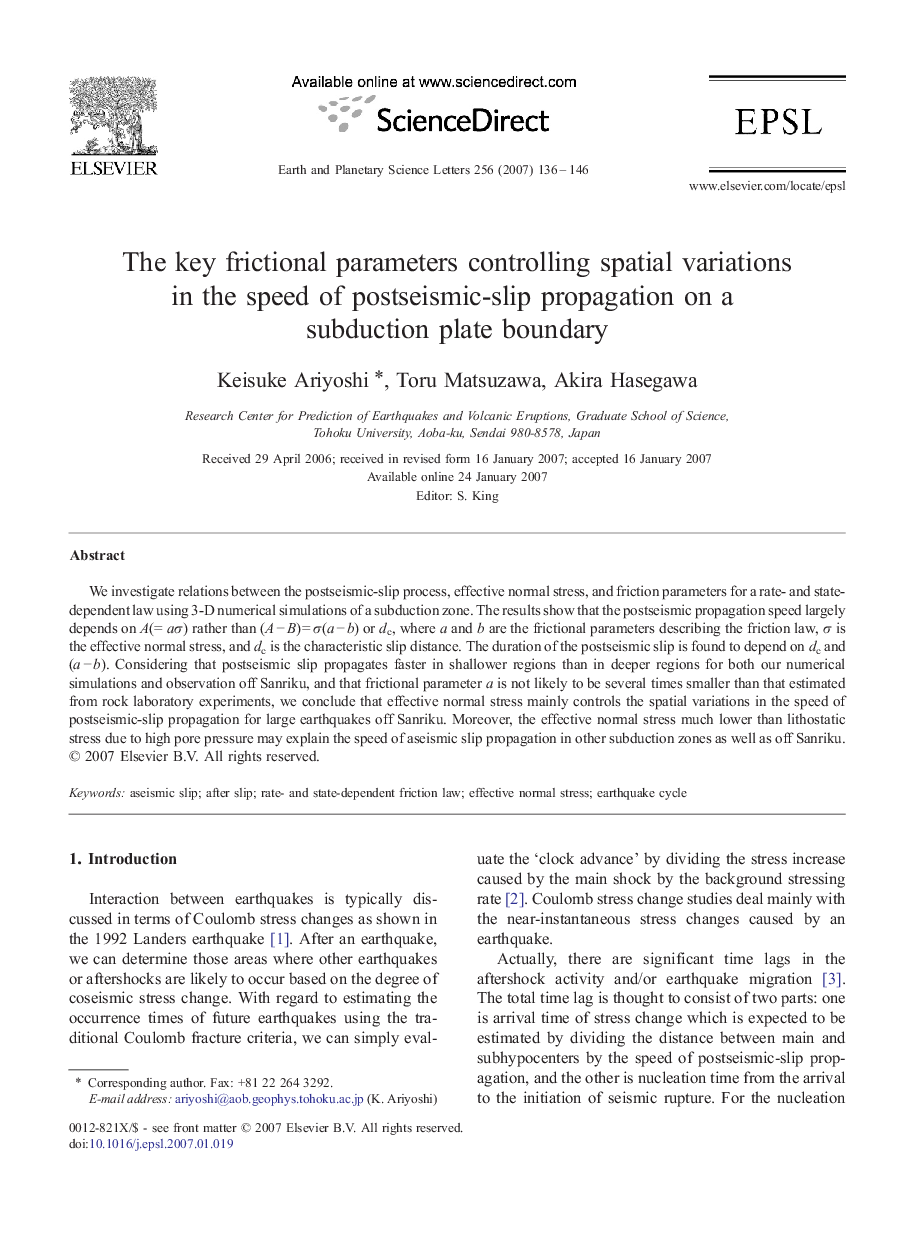| Article ID | Journal | Published Year | Pages | File Type |
|---|---|---|---|---|
| 4680473 | Earth and Planetary Science Letters | 2007 | 11 Pages |
Abstract
We investigate relations between the postseismic-slip process, effective normal stress, and friction parameters for a rate- and state-dependent law using 3-D numerical simulations of a subduction zone. The results show that the postseismic propagation speed largely depends on A(= aÏ) rather than (A â B) = Ï(a â b) or dc, where a and b are the frictional parameters describing the friction law, Ï is the effective normal stress, and dc is the characteristic slip distance. The duration of the postseismic slip is found to depend on dc and (a â b). Considering that postseismic slip propagates faster in shallower regions than in deeper regions for both our numerical simulations and observation off Sanriku, and that frictional parameter a is not likely to be several times smaller than that estimated from rock laboratory experiments, we conclude that effective normal stress mainly controls the spatial variations in the speed of postseismic-slip propagation for large earthquakes off Sanriku. Moreover, the effective normal stress much lower than lithostatic stress due to high pore pressure may explain the speed of aseismic slip propagation in other subduction zones as well as off Sanriku.
Related Topics
Physical Sciences and Engineering
Earth and Planetary Sciences
Earth and Planetary Sciences (General)
Authors
Keisuke Ariyoshi, Toru Matsuzawa, Akira Hasegawa,
